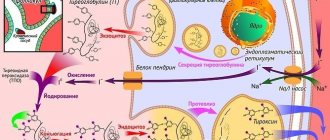Key Facts
- Listeriosis is a serious disease, but it can be prevented and treated.
- Pregnant women, older adults, and individuals with weakened immune systems, such as those with immunocompromised conditions due to HIV/AIDS, leukemia, cancer, kidney transplants, and steroid therapy, who are at highest risk of developing severe listeriosis, should not consume high-risk foods .
- High-risk foods include processed and ready-to-eat meat products (such as cooked, canned and/or fermented meat products and sausages), soft cheeses and cold-smoked fish products.
- Listeria monocytogenes is widespread in nature. They can be found in soil, water, vegetation and some animal feces and can contaminate food.
- Listeriosis is an infectious disease caused by the bacterium Listeria monocytogenes.
Foodborne listeriosis is one of the most serious foodborne illnesses.
Its causative agent is the bacterium Listeria monocytogenes. It is a relatively rare disease, with between 0.1 and 10 cases per 1 million people occurring annually, depending on countries and regions. Although cases are few, the infection poses a significant public health problem due to its high mortality rate. Unlike many other bacteria that cause widespread foodborne illnesses, L. monocytogenes can survive and reproduce at low temperatures, typically maintained in refrigerators. Consumption of contaminated food containing large quantities of L. monocytogenes is the main route of transmission. The infection can also be transmitted from person to person, particularly from pregnant women to their fetus.
L. monocytogenes is widespread in nature and can be found in soil, water and the gastrointestinal tract of animals. Contamination of vegetables can occur through the soil or through the use of manure as fertilizer. Ready-to-eat foods can also become contaminated during processing, and bacteria can grow to dangerous levels during distribution and storage.
The following foods are most often implicated in listeriosis:
- products with a long shelf life in the refrigerator (if stored for a sufficiently long time at temperatures maintained in the refrigerator, the amount of (L. monocytogenes); in products can increase significantly); And
- foods consumed without further processing, such as cooking, to kill L. monocytogenes.
In the past, ready-to-eat foods (such as sausages, pates, smoked salmon and fermented raw meat sausages), dairy products (including soft cheeses, unpasteurized milk and ice cream), and prepared salads (including coleslaw and carrots) have been implicated in outbreaks of the disease. with mayonnaise and bean sprouts), as well as fresh vegetables and fruits.
Story
In 1924 in London, Murray and Irton (ES Murray, Irton), and in 1926, Murray, Webb, Swann (ES Murray, R. Webb, M. Swann) described a microorganism that they isolated during a kind of sepsis that arose in marine pigs and rabbits in the Cambridge University nursery, and called it Bact, monocytogenes, since its introduction into the blood of experimental animals caused monocytosis in the blood. In 1927, JH Pirie isolated the same microorganism from the rat-like rodent Tatera lobengullae in South Africa and named it Listerella hepatolytica due to its peculiar liver damage. Human L. was first observed in 1915 by an Australian. doctor Atkinson (E. Atkinson) in the form of an outbreak of infantile paralysis. In 1918 the French. doctors Dumont and Cotoni (J. Dumont, L. Cotoni) isolated a microbe from the cerebrospinal fluid of a soldier who died of meningitis, which was identified 20 years later by S. Paterson as Listerella monocytogenes. Nifeldt (A. Nyfeldt) in 1929 isolated this pathogen in human monocytic tonsillitis. In 1935 and 1936 Burn (S. Burn) described L. in postpartum women, newborns and in a patient with meningitis. By 1940, Nifeldt obtained 13 strains of the pathogen from the blood and cerebrospinal fluid of patients with mononucleosis. In the same 1940, Peary renamed the generic name “Listerella” to “Listeria”, since the first name had already been given to the genus of the fungus Mycetozoon, and designated the pathogen as Listeria monocytogenes. Accordingly, the disease is usually called listeriosis. In the USSR, L. was described first in pigs by T. P. Slabospitsky (1936, 1938, 1940), then in rabbits by P. P. Sakharov and I. S. Istomin (1940), and P. M. Svintsov (1942). P. P. Sakharov and E. P. Gudkova (1946), A. F. Bilibin (1949) described L. in people with meningoencephalitis.
Disease
Listeriosis is a range of diseases caused by the bacterium L. monocytogenes. Outbreaks of these diseases occur in all countries. There are two main types of listeriosis: the non-invasive form and the invasive form.
Non-invasive listeriosis (febrile listeriosis gastroenteritis) is a mild form of the disease that occurs mainly in healthy people. Symptoms include diarrhea, fever, headache and myalgia (muscle pain). The incubation period is short and lasts several days. Outbreaks of this disease are usually associated with the consumption of foods containing L. monocytogenes in large quantities.
Invasive listeriosis is a more severe form of the disease and affects certain high-risk populations. These include pregnant women, patients receiving treatment for cancer, AIDS and organ transplants, the elderly and infants. This form of the disease is characterized by severe symptoms and high mortality (20%-30%). Symptoms include fever, myalgia (muscle pain), septicemia, and meningitis. The incubation period usually lasts one to two weeks, but can vary from a few days up to 90 days.
The initial diagnosis of listeriosis is made based on clinical symptoms and identification of bacteria in smears taken from blood, cerebrospinal fluid (CSF), neonatal meconium (or fetal meconium in the case of abortion), and feces, vomit, food, or animal feed. Various techniques are available to diagnose listeriosis in humans, including polymerase chain reaction (PCR). During pregnancy, the most reliable way to identify listeriosis as the cause of symptoms is by bacteriological culture of the blood and placenta.
Pregnant women are about 20 times more likely to contract listeriosis than other healthy adults. Listeriosis can lead to miscarriage or stillbirth. Newborns may also have low birth weight, septicemia, and meningitis. People with HIV/AIDS are at least 300 times more likely to get sick than people with a normally functioning immune system.
Due to the long incubation period, it can be difficult to determine the food product that has become the source of infection.
Diagnosis of listeriosis
The diagnosis of acquired listeriosis (except for anginal and oculoglandular forms) is difficult to make due to the variety of symptoms. In the peripheral blood of listeriosis, lymphocytosis and monocytosis are observed in the 1st week of the disease.
Epidemic data, bacteriological isolation of the pathogen, PCR, isolation of specific antibodies using serological research methods (ELISA, RPGA, RSK, RA) must be taken into account.
The differential diagnosis of acquired listeriosis includes diphtheria, tularemia, typhoid fever, sepsis, pseudotuberculosis and serous meningitis. Congenital listeriosis is differentiated from congenital cytomegaly, toxoplasmosis, sepsis and hemolytic disease of the newborn.
Fighting methods
L. monocytogenes must be controlled throughout the food chain and a comprehensive approach must be taken to prevent the growth of this bacteria in final food products. Efforts to control L. monocytogenes face significant challenges due to its widespread occurrence, high resistance to traditional food preservation methods (such as adding salt or acid and smoking), and its ability to survive and reproduce at temperatures maintained in refrigerators (about 5 °C). All sectors of the food chain must follow Good Hygiene Practices and Good Manufacturing Practices and ensure food safety based on Hazard Analysis and Critical Control Points (HACCP) principles.
- Guidelines for the application of general principles of food hygiene for the control of the bacterium Listeria monocytogenes in food
Where appropriate, food manufacturers should conduct testing using microbiological criteria to confirm and verify the correct implementation of production processes and other hygiene measures in accordance with HACCP.
In addition, manufacturers of products associated with listeriosis risks should monitor the environment to identify and eliminate environmental niches, including areas favorable to the establishment and proliferation of L. monocytogenes. Modern technologies using genetic signature (whole genome sequencing) allow faster identification of the food source of listeriosis outbreaks by linking L. monocytogens isolated in food products.
Treatment of listeriosis
The basis of therapy is etiotropic antibacterial agents (Levomycin, Amoxiclav, Ceftriaxone) in age-appropriate dosages during the period of fever and another 3-5 days after the temperature normalizes. In severe cases, corticosteroid therapy with Prednisolone is prescribed. According to indications, detoxification therapy is carried out and antipyretics are used.
Essential drugs
There are contraindications. Specialist consultation is required.
- Levomycetin (broad-spectrum antibiotic). Dosage regimen: orally half an hour before meals or during meals from 0.25 g to 0.75 g (average - 0.5 g) per dose 3-4 times a day during the entire febrile period plus 3-5 days in addition, and in severe cases up to 2-3 weeks. from the moment body temperature normalizes.
- Amoxiclav (broad-spectrum antibiotic). Dosage regimen: orally, in case of mild to moderate infection, 1 table. 250 + 125 mg every 8 hours or 1 tablet. 500 + 125 mg every 12 hours, in case of severe infection and respiratory tract infections - 1 table. 500 + 125 mg every 8 hours or 1 tablet. 875 + 125 mg every 12 hours throughout the febrile period plus 3-5 days beyond that.
- Ceftriaxone (broad-spectrum antibiotic). Dosage regimen: IM, IV. For adults and children over 12 years of age, the average daily dose is 1-2 g of ceftriaxone once a day or 0.5-1 g every 12 hours during the entire febrile period plus 3-5 days beyond that.
Prevention
L. monocytogenes in food products is killed by pasteurization and heat treatment.
In general, recommendations for preventing listeriosis are similar to those for preventing other foodborne illnesses. These include safe food handling and adherence to the WHO Five Principles for Safer Food (1. Keep food clean. 2. Separate raw food from cooked food. 3. Cook food thoroughly. 4. Store food in a safe temperature. 5. Use safe water and safe raw foods.).
- Poster: Five Principles for Improving Food Safety
Persons from risk groups should:
- Avoid consuming dairy products made from unpasteurized milk; semi-finished and ready-to-eat meat products (such as sausages, ham, pates and meat pastes), as well as cold smoked seafood products (such as smoked salmon);
- Read the expiration date and storage temperature information on the packaging and follow these directions carefully.
It is important to adhere to the expiration dates and storage temperatures indicated on the packaging of ready-to-eat foods to ensure that the bacteria potentially present in these foods does not increase to dangerous levels. Heat treatment of foods before consumption is another effective way to kill bacteria.
Pathogenesis
Listeria enters the human body through the mucous membranes of the eyes, mouth, pharynx, stomach (with low acidity), small intestine, respiratory tract and through damaged skin. Then, lymphogenously, they are carried into regional lymph nodes, into the blood, and disseminate into parenchymal organs (tonsils, liver, spleen, adrenal glands, brain), where miliary nodules develop with necrosis in the center. The latter appear histologically as granulomas (listeriomas). This, as well as intoxication, explains the development of a generalized process in the form of anginal-septic (with mononucleosis), oculoglandular, nervous and typhoid forms. In this case, L. monocytogenes can be isolated from blood, lymph nodes, nodes or cerebrospinal fluid. During oral infection of animals in the incubation and acute periods, the pathogen is found in group (Peyer's) patches, lymphatic follicles, in the lymph nodes of the mesenteric root and even in the liver and spleen; liver damage with necrotic foci is noted.
WHO activities
WHO promotes strengthening food safety systems, good production practices and educating retailers and consumers on proper food handling and the prevention of bacterial contamination. Educating consumers, especially high-risk groups, and training food workers in safe food handling are among the most effective ways to prevent foodborne illnesses, including listeriosis.
WHO and FAO have published an international quantitative risk assessment of L. monocytogenes in ready-to-eat foods. This assessment provided the scientific basis for the Codex Alimentarius Commission's Guide to the Application of General Principles of Food Hygiene for the Control of Listeria Monocytogenes in Foods. This guidance contains microbiological criteria (i.e. maximum acceptable levels for the presence of L. monocytogenes in foods).
WHO's main tool for assisting Member States in surveillance, coordination and outbreak response is the International Food Safety Authorities Network (INFOSAN), which brings together Member States' national authorities responsible for responding to safety incidents food products. This network is jointly managed by WHO and FAO.
Complications
The most common complications of listeriosis are:
- endocarditis in the septic-granulomatous form of the disease;
- congenital malformations in children of sick women, stillbirth, premature birth.
- death of newborns with the progression of respiratory and cardiovascular failure, as well as with the development of purulent meningitis;
- pneumonia and purulent pleurisy in infants;
- hepatitis;
- consequences of damage to the central nervous system (mental retardation, paralysis, epilepsy, convulsions) after treatment.
Answers to frequently asked questions
Is the prognosis good? The prognosis depends almost entirely on how early listeriosis was diagnosed. At the initial stage, it is successfully treated with antibiotic therapy. If complications have already developed, it is possible to get rid of listeria, but the functioning of one of the internal organs may be irreversibly impaired.
Can listeriosis be chronic? The pathology is chronic. During remission, symptoms are mild, usually resembling a flu-like condition. During relapses, all clinical manifestations of listeriosis sharply intensify.
Diagnostic procedures
Diagnosis of listeriosis causes certain difficulties for specialists, since the pathology does not have specific symptoms and clinically resembles several diseases at once: sore throat, mononucleosis, influenza, ARVI.
Doctors begin diagnosis by collecting anamnestic data and complaints, studying the clinical picture, objective examination, palpation of the lymph nodes and liver, measuring body temperature, pulse and pressure. The results of laboratory tests are decisive for making a diagnosis:
- The hemogram shows monocytosis, anemia, leukocytosis, accelerated ESR, thrombocytopenia,
- In general urine analysis - leukocyturia, proteinuria, erythrocyturia,
- In the cerebrospinal fluid there is turbidity, leukocytosis, increased protein levels, gram-positive rods,
- Microbiological examination of the throat, conjunctiva, amniotic fluid, cerebrospinal fluid - sowing and microscopy of biomaterial on a nutrient medium in order to isolate the pathogen and determine its sensitivity to antibiotics,
- Serodiagnosis - staging the agglutination reaction, indirect hemagglutination reaction, compliment binding reaction,
ELISA - determination of antibodies to listeria in the blood,
- PCR - detection of Listeria genetic material in the test sample,
- Bioassay on laboratory animals - infection of white mice or guinea pigs with a daily culture of Listeria by instillation into the eyes or injection into the blood,
- Skin test - intradermal injection of listeria antigen.
Positive results of these tests confirm the diagnosis of listeriosis. Additionally, instrumental methods for studying patients are carried out. These include: EEG of the brain, rheoencephalography, MRI or CT scan of the brain.











